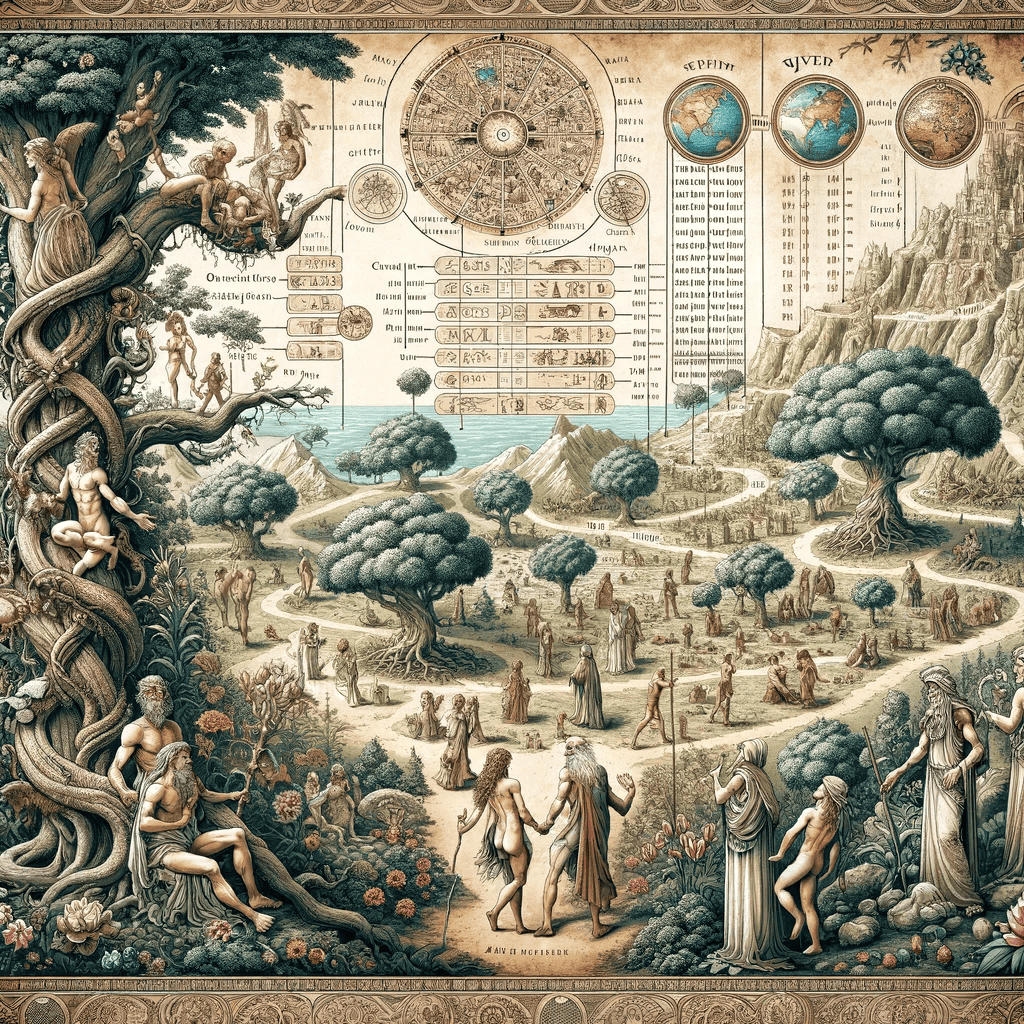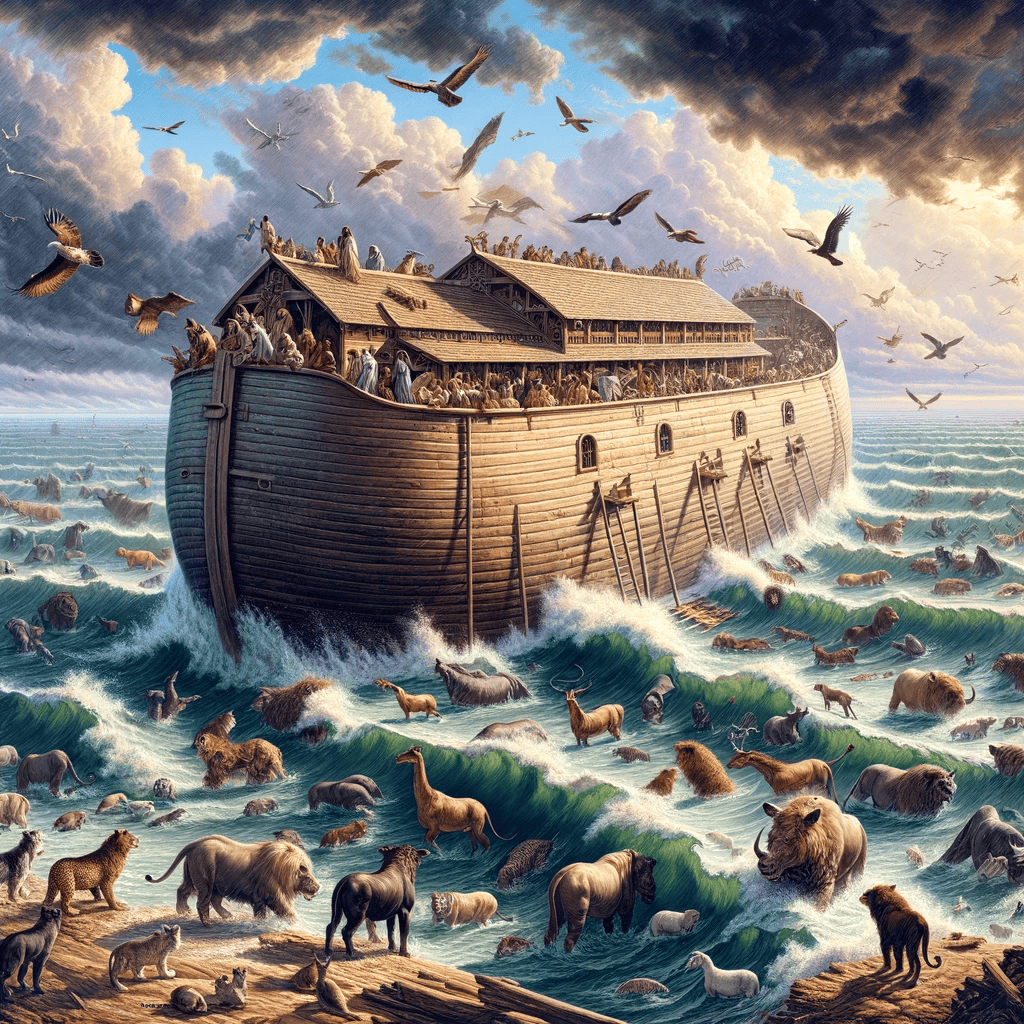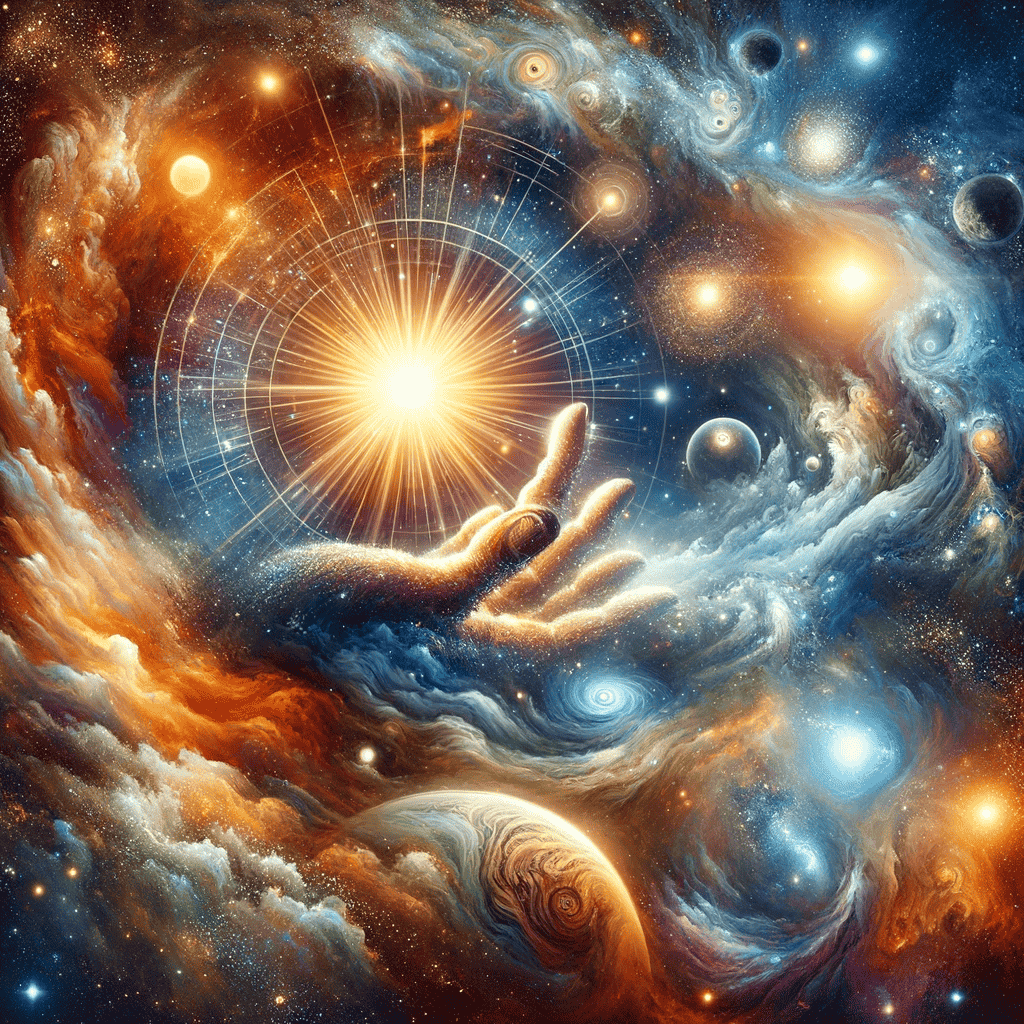Creationism, in the most general sense, is the belief that the universe and everything in it originated with God. In this sense, Christians, Jews, Muslims, and other believers in a Creator God are creationists. This is true whether they believe that Creation happened relatively recently or billions of years ago, and no matter what processes they believe God used to create.
However, the term creationism has specifically come to refer to a set of beliefs about God, modern science, and natural history, based on the commitment to understanding the Genesis creation account as literal history. In most uses today, creationism refers to young Earth creationism. The popular press often uses this label to make a distinction between those who accept evolution and those who reject evolution for theological reasons.
Beliefs of Young Earth creationists

Young Earth Creationists (YECs) view the Bible as a reliable source of facts about science and history. They believe that the account of creation in the Bible either supports or supersedes all other human knowledge. According to this interpretation, God created the universe, Earth, and all life on Earth out of nothing roughly 6,000 to 10,000 years ago. This creative act took place during six 24-hour days. YECs calculate the age of the Earth using the genealogies found in the Bible. They hold a literal belief in the biblical narrative that God created Adam, the first man, from dust and Eve, the first woman, from Adam’s rib. As the first human beings, Adam and Eve are thought to be the biological ancestors of all other humans on Earth.
The First Adam
A literal historical Adam and Eve, who are the parents of all humanity, are important to the creationist view of salvation, which depends on specific concepts of the origins of death and the effects of sin. They believe that when Adam and Eve disobeyed God’s command not to eat the fruit of the Tree of Knowledge of Good and Evil in the Garden of Eden, sin entered the world for the first time, bringing about death, which was not a part of the original creation, and corrupted God’s creation in significant ways. This event is known as the Fall.
Creationists conceive of the pre-Fall world as being free of all death, disease, disaster, and predation. In addition to ushering in mortality for humans and other creatures, they believe the Fall transformed God’s good creation, causing herbivores to become carnivores, and introducing organisms that harm and make life difficult, like plants with thorns, and all parasites and pests. They also conceive that Adam and Eve passed on their acquired sinful state to all their descendants. As a result of the Fall, all humans are born with a spiritually corrupted “sinful nature.” Since a sinful nature necessitates separation from God, everyone needs God’s grace and redemption.
The Second Adam
Jesus Christ is seen as the second Adam. Since he was specially created in the womb of the Virgin Mary and not descended from Adam and Eve, he was born without a sinful nature and capable of living the sinless life required to serve as a worthy sacrifice for all of humanity. Christ’s death on the cross is understood in terms of the substitution theory. In this view, Christ died in place of sinful humanity. By willingly accepting the punishment that humanity deserved for their sin, Jesus satisfied the demands of God’s justice and made a way for God to forgive humans for their sin. Christ’s atonement reverses the curse of sin from the Garden of Eden. He makes it possible for all who put their faith in Him to regain access to the immortality that was lost in the Garden.
In addition to these key beliefs about a historical Adam and Eve as the sole progenitors of humanity, creationists believe that the biblical account of Noah’s flood in Genesis describes a historical worldwide event that destroyed all life on Earth except for the animals and humans that were on Noah’s ark. Since they claim all life on Earth was destroyed in the flood, they trace all of human civilization back to Noah and his three sons and their families. They attribute the diversity of languages and cultures on Earth to God’s actions at the Tower of Babel described in Genesis 11.
A brief history of creationist science
When scientists first started to investigate geological features in the early 19th century, they presumed that the biblical account of the worldwide flood in Genesis 6-8 was literal history and sought to make sense of what they were finding as a result of a global cataclysmic event. Geologists found that the layers of rocks and fossils they were seeing did not fit with this explanation.
Prevailing theories moved away from catastrophism (the idea that the Earth had developed in a series of cataclysmic events culminating with the biblical flood) toward a view called uniformitarianism. This view sees the present as the key to understanding the Earth’s past. They believed the processes they observed in the present had also been happening in the past. The incremental changes over long periods created all the Earth’s geological features. Modern geologists accept that catastrophic events occurred in Earth’s past, but they explain these catastrophes through observable natural processes and established laws of nature that have remained constant over time.
The persistence of catastrophism
However, interest in disputing uniformitarianism and reconciling evidence in nature with the biblical account was revived in the twentieth century. Henry Morris and John Whitcomb reintroduced catastrophism and what became known as “flood geology” when they wrote an influential book, The Genesis Flood: The Biblical Record and its Scientific Implications, in 1961. This book became the foundation of creation science, which began in the United States as an argument for a literalist interpretation of Genesis and against the scientific consensus that proposes an ancient Earth and that the evolutionary processes first advocated by Charles Darwin lead to the diversity of life.

Creation science researchers actively seek evidence to support the recent creation of Earth, calculating its age as between 6,000 and 10,000 years old based on the genealogies recorded in Genesis. Many creationists rely on a timeline introduced by James Ussher in the 17th century. This timeline calculates that the creation happened in 4004 BC. Flood geologists place the flood, which destroyed all life except for Noah, his three sons, and their families, at 2349 BC and believe this cataclysmic event deposited all fossils. The main proponents of creation science in the United States are the organizations Answers in Genesis, the Creation Research Society, and the Institute for Creation Research. These organizations strive to apply the scientific method within a framework that aligns with their interpretation of biblical events, often leading to conclusions that differ significantly from mainstream scientific consensus.
The emergence of baraminology
The creation science model assumes that a distinct creation of humans and other life forms as separate “kinds” occurred, with no shared common ancestry. In support of this model, some creationists have recently developed a field of study they call baraminology, based on the Hebrew word baramin, which means ‘kind.’ Baraminology provides an alternative taxonomy for classifying life. It assumes the word ‘kind’ in the Bible means a much wider group than the scientific category ‘species,’ and that these kinds diversified after the flood into the more than thirty million species we see today. For this to happen, they propose a model of rapid speciation. They make a distinction between what they call macroevolution (large-scale evolutionary changes over long periods), which they reject, and microevolution (observable evolutionary changes within species or populations), which they accept.
For example, the Creation Museum and the Ark Encounter (tourist destinations run by Answers in Genesis that teach about creation science) claim all members of the cat kind (lions, tigers, cougars, jaguars, leopards, domestic cats, etc.) emerged from a single pair representative of the cat kind in less than five thousand years. The model requires around 7 million species to arise from fewer than 20,000 ancestor species in fewer than a few hundred years. This explanation becomes necessary if one assumes Noah literally brought two of every kind of animal on the planet onto the ark, all animals not on the ark died fewer than five thousand years ago, and all existing animal life on the planet traces back to Noah’s ark. However, the scientific community does not widely accept these views, as they often conflict with the overwhelming evidence supporting evolutionary theory.
Only operational science
To dispute the scientific consensus, creationists argue that “operational science,” involving repeatable experiments and direct observations of the present, represents the only truly reliable and valid science due to its capacity for direct hypothesis testing. They view the “historical science” in fields like mainstream cosmology, paleontology, archaeology, and geology as primarily educated guesses reliant on assumptions and circular reasoning. Creationists often accuse scientists of seeing only what they expect to see based on their worldview, which does not consider the Bible.
But creation science attempts to overturn the scientific consensus and has so far not succeeded. The Creation Research Society and the Institute for Creation Research sponsored the RATE project (Radioisotopes and the Age of the Earth), a research project, between 1997 and 2005. The goal was to evaluate the validity of scientific dating methods in light of young Earth creationist claims that the Earth is young. In 2005, they released their findings, acknowledging evidence for over 500 million years of radiometric decay at today’s rates. This finding, not fitting with their young Earth model, led them to propose that nuclear decay rates accelerated by approximately one billion times during the first two days of the creation week and the global flood.
Alleviating Contradictions
To alleviate contradictions between the young Earth model and scientific evidence, some creationists argue for the “appearance of age.” Sometimes, this is known as the Omphalos hypothesis. They argue that the reason why radiometric dating indicates some rocks are billions of years old, the fossil record contains billions of years of life history, and light reaches Earth from galaxies billions of light-years away is because God created the Earth in a mature form, so it appears ancient. Since the Genesis account portrays God creating a mature Garden of Eden, with mature humans, and fully-grown plants and animals, they argue it is logical to assume that God created mature rocks and starlight.
Diversity among creationists
Not all people who self-identify as creationists are young Earth creationists, and not all people who believe in a Creator call themselves creationists. Old Earth creationism, another branch within creationist beliefs and associated with the organization Reasons to Believe, holds that God specially created life without evolutionary processes, yet adherents accept the scientific evidence of an ancient Earth and the Big Bang theory. Many of these believers interpret each day in Genesis as a long period of creation, known as the day-age view. Others prefer the description of progressive creationism, which proposes that God created new, various forms of life over many millions of years during creative bursts of activity, which were followed by periods of equilibrium.
Like young Earth creationists, most old Earth creationists reject common descent, the scientific theory that says all life shares a common ancestor. Instead, they propose that God created mature and distinct life forms that adapted and changed only within the boundaries of their created kinds. There are also evolutionary creationists, people who accept the evidence for an ancient Earth and believe God created the diversity of life on Earth using the process of evolution, often referred to as theistic evolution.
Intelligent Design

Some creationists, from both young and old Earth camps, affiliate with the Intelligent Design (ID) movement, which posits an intelligent cause as the best explanation for some features of the universe and life. They do not accept that these features could have arisen by chance or as a result of an unguided natural process. This perspective suggests divine intervention as a possible explanation for these complex features. ID claims that evidence of an Intelligent Designer is empirically detectable through scientific investigation, and their arguments center on examples of irreducible complexity, specified complexity, and fine-tuning. ID theory does not claim the Intelligent Designer is the Christian God, but many Christian creationists believe ID arguments help argue against evolution. Several prominent ID leaders have also published theological objections to evolution based on an interpretation of the Bible.
Dover Trial
Some people consider ID to be a form of creationism, but most people within the movement reject this label and think of it as a scientific pursuit. During the Dover Trial in 2005, a federal lawsuit, parents sued a school district because the board of education had added a disclaimer to the high school biology curriculum in public schools. This disclaimer required the teaching of Intelligent Design (ID) alongside evolutionary theory. This case highlighted significant challenges and debates in the realm of science education, particularly regarding the inclusion of alternative theories to evolution in school curricula. The court ruled that ID is a form of creationism, not a scientific theory and that the teaching of creationism violates the Establishment Clause of the Constitution to require teachers to teach it in a public school.
Currently, some ID proponents reject the scientific theory of evolution, while others accept the basic premise that life forms share common ancestry with other life forms, but they dispute that the proposed mechanisms of random mutation and natural selection are capable of producing the design they see in creation without intelligent guidance. The Discovery Institute (DI) is an organization that advocates Intelligent Design and promotes the idea that scientific theories such as evolution are controversial and disputed. They argue that public school science courses should expose the weaknesses of evolutionary theory and teach Intelligent Design as an alternative explanation.
Conclusion
Creationism represents a diverse spectrum of beliefs that center on the notion that a divine creator brought the universe and life into existence. While commonly associated with young Earth creationism, which interprets the biblical account of creation and Genesis as literal history, creationism also includes old Earth creationists and evolutionary creationists, each with their own interpretations of the Genesis narrative and scientific evidence. The young Earth perspective, with its literal interpretation of a 6,000 to 10,000-year-old Earth and the global flood, remains a sizable portion of this belief system. The debate and efforts to reconcile these religious beliefs with scientific findings have led to the emergence of creation science, flood geology, and baraminology. These fields attempt to provide alternative explanations for geological and biological phenomena, often challenging established scientific consensus.
Moreover, the Intelligent Design movement, which argues for the presence of an intelligent cause behind the complexity of life and the universe, reflects another facet of this debate. This movement, while often linked with creationist views, seeks to establish itself as a distinct scientific pursuit. The intersection of faith, science, and interpretation of religious texts in creationism showcases the ongoing dialogue and diverse perspectives within this field. As discussions continue, creationism remains a compelling subject, reflecting the intricate relationship between faith, science, and the understanding of our world’s origins.
What do you think? Please share your thoughts below.
Too often, people answer faith questions with dogmatic certitude and neglect the historical diversity and complexity of Christian ideas. The Questions Project is a resource that responds to questions about faith, history, and scripture in a way that honors the historic diversity and complexity of Christian thought. But this is a work in process, and we need your help. Please provide feedback. We are particularly interested in knowing what we have missed and how we can improve our responses. Please keep all comments kind or risk deletion.
